The Lilies: How Monet Brings Nature Close to Home
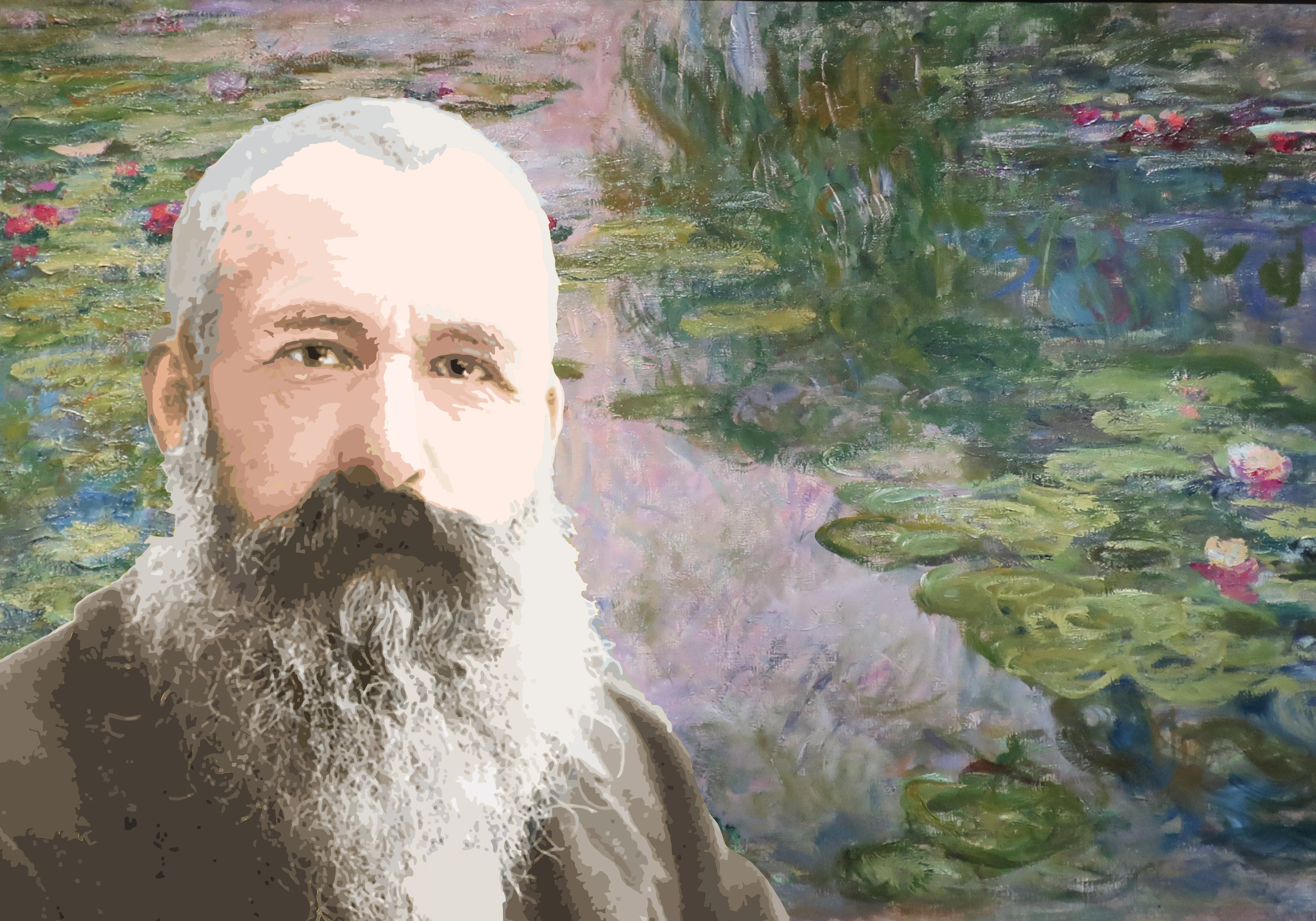
There is something to be said for art and the way it connects us to the world. Art has the power to inspire us, to make us feel something, to make us think. When nature is the subject of a work of art, it has the power to enchant us with the natural wonders of the planet we call home – reminding us that we have a world that’s worth protecting. Nature is often an artist’s greatest muse, and it certainly was for Claude Monet.
Monet and Boston: Legacy Illuminated
I had the opportunity to see “Monet and Boston” at the Museum of Fine Arts in Massachusetts, and it was certainly an experience like no other. Immediately you feel like an honored guest; walking up to the museum, there is a separate door for those seeing Monet.
As soon as you’re inside, multiple staff dressed in sleek work clothes greet you and send you on your way. I look around as I head up the stairs, and as always I am awed by the talent people have. All artists have something of their own that makes their work unique to them, whether it’s distinctive brush strokes or the color palette they use, and it makes each exhibit all the more exciting.
Monet’s work brings a sense of serenity to art, and allows us to gaze upon landscapes uninterrupted. His desire to capture the world without human presence is rewarded with beautiful pieces like the ones I’ll highlight today, and the fact that he often captures the same settings during different seasons shows just how ever-changing the earth is around us…
As soon as I made it through the final glass doors into the exhibit, I’m hit with beautifully backlit masterpieces, each telling a different story. The words “Monet and Boston: Legacy Illuminated” greet me at the front, and I walk, dazed, to the first piece on display.
“Sunset on the Sea, off Pourville”
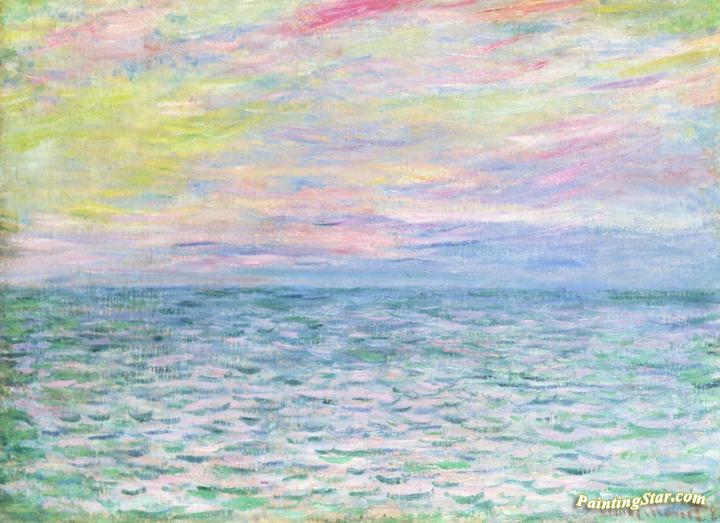
I have always been a sucker for sunsets, and right off the bat this one caught my eye. Hues of pink were mixed with those of yellow and blue. Every shadow captured a different shade, and all of them reflected off of the realistic waves lining the bottom half of the painting. While only among the first few paintings, I spent my time with this one. It immersed me in memories of growing up going to my Uncle’s house, walking a couple blocks to the beach and getting excited as soon as I could hear the waves. Especially at a time where we are all cautiously making our way back out of our houses and into the arms of nature, it made me long to recreate all those memories.
Enchanted, I moved through the room to the next few paintings, noticing how everyone else was silently gazing in awe at one painting or another, like I had just been at the “Sunset on the Sea.” The next piece that caught my eye was that of tall, thin trees peacefully growing in a large space…
“Poplars at Giverny”
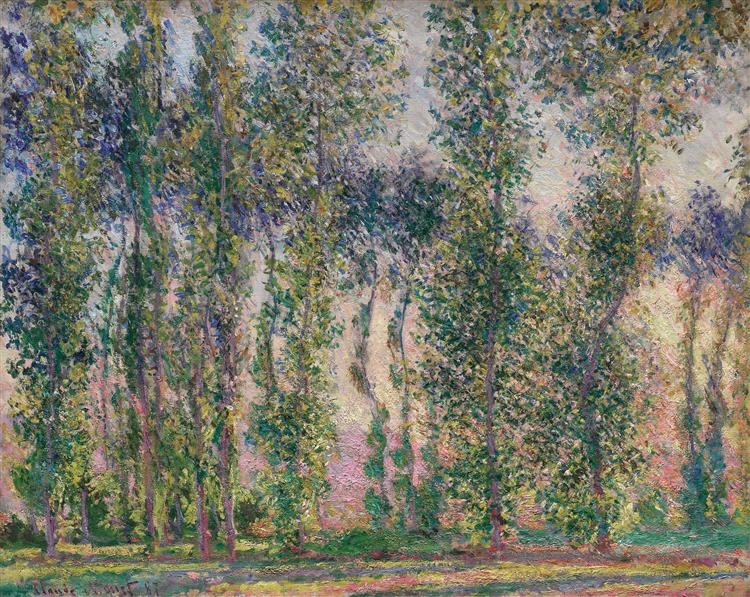
While a lot of imagery using tall, thin trees can be described as gaunt or sinister, used in books to set the scene of an eerie path through dimly-lit woods, this one has a far more vibrant, uplifting feel to it. The trees aren’t reaching out to grab unsuspecting travelers, but rather inviting them to take a rest and have a picnic by their trunks. It makes me want to sit under a willow tree, reading a book as I hear the wind blowing softly by me. It makes me want to run outside and enjoy the Spring days while they’re here, and once again wishes to lure me outside and away from my responsibilities.
“Field of Poppies Near Giverny”
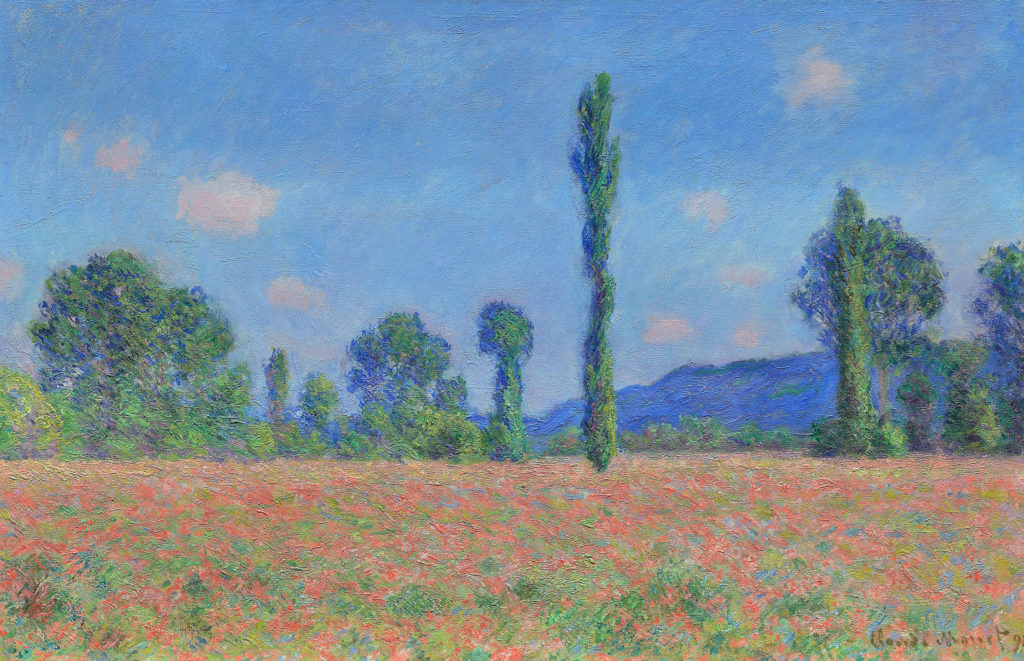
This one gave off the air of freedom. Being able to walk freely among the flowers, seeing the world all around you as you’re immersed in the experience. Wide open fields to run in, enjoying every last bit of nature surrounding you. This one makes me want to see all the beautiful places in the world, and do everything I can to protect them. Anything to keep this landscape untouched for future generations to enjoy.
“Valley of the Creuse (Sunlight Effect)”
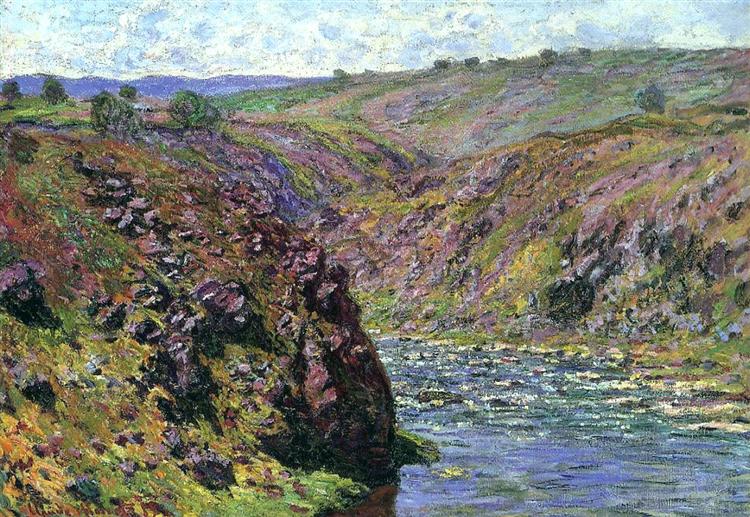
Upon seeing this painting, I wanted nothing more than to sit by a quiet stream and let my feet graze the water as it ambled on. It is scenes like this that make people want to traverse the Grand Canyon, that fulfill every hiker’s goal. To come up over a hill and see such a natural wonder in front of you is a better reward than I could ever think of. I was taken away from the small room where it hung from the wall, and dropped into a scene from all those picturesque old movies my mother loves to watch with my sister and I.
After my countless daydreams evoked by the paintings in front of me, I finally came to the end of the exhibit, where one painting stood larger than the others. The one I came to see…the lilies.
“Water Lilies (1907)”
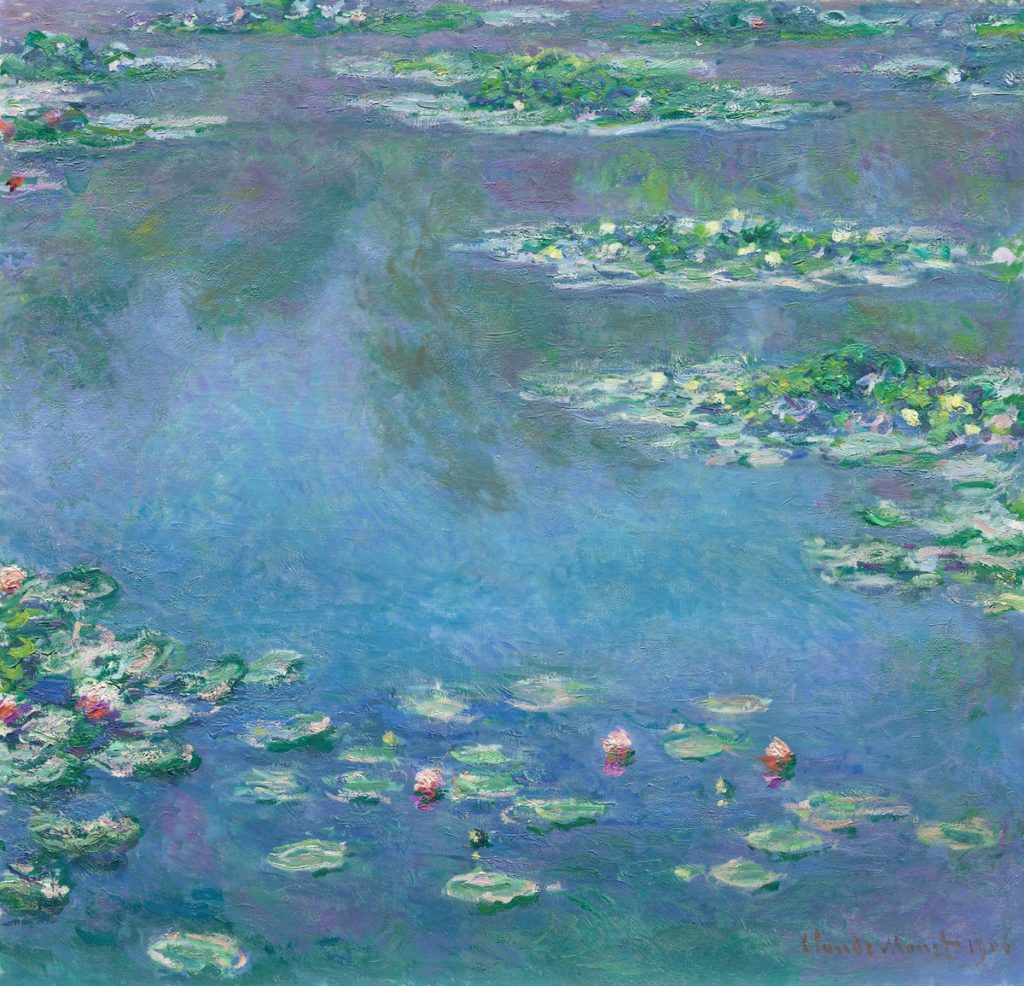
This piece is certainly much simpler upon first glance compared to the others that I’ve highlighted, but it is arguably the most important to me. This was the first piece I saw of Monet’s, the one that captured my attention and drew me closer to my sister (a fellow fan). This is the one I got countless postcards depicting, the one where I realized just why so many people have such a fine appreciation of art.
It reminds me of the gardens I used to walk in with my father, when I first started photography. It takes me back to a time where my entire family went on a trip, and I was too young to remember anything but the little pond filled with water lilies shifting in the wind. It is something that struck me for so many reasons, and left me almost teary-eyed as the memories all flooded back. To me, this is the epitome of how Monet brought nature close to home, both physically and emotionally.
Monet, The World, and Human Life
Seeing this artwork reinvigorated me, and reminded me of a quote I often heard associated with Monet, “The richness I achieve comes from nature, the source of my inspiration”. As both an artist and a person, Claude Monet truly loved the outside world, and places untouched by human life. I often think about the places he painted, and how they appear now, all these years later. Are they still protected from our influence? Or have they been taken in and adapted to our liking, as many others have before?
Regardless of the answer, I was ecstatic to have the chance to see it as he did at the time, and enchanted by the feelings his art left me with. I hope that you all have something to hold close to your heart, something that reminds you of our ties with each other, and how they connect back to nature. We’re all going about our lives in different ways, but it’s important to remember that we need to take a step back at times and just appreciate the little things beyond our four walls. Sometimes those little things hold the most value…


Leave a Reply